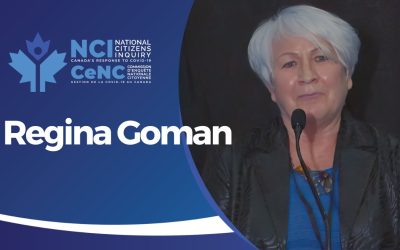Tories reject public system
New plan includes no-frills option, break for new drivers
BY CARL DAVIES Telegraph-Journal, June 30, 2004
New Brunswick will not see a public auto-insurance system under Premier Bernard Lord’s watch.
The premier announced in the legislature Tuesday that he’s rejecting the recommendation of a committee of MLAs for a government-run system and opting to continue providing auto insurance through private industry.
Several changes are being made to legislation that Mr.Lord said will reduce the cost of insurance to consumers, and save the government the cost of a publicly run system.
The changes include the introduction of a so-called “no frills” option, where a person can pay less for insurance if they are willing to accept a lower level of coverage.
Also, new drivers will be credited with being accident free for six years if they take a driver education course, a move that is expected to save the young driver an average of 30 per cent in premiums.
They get to keep that discount if they maintain a clean driving record.
The no-frills package is expected to cost on average 15 per cent less than what people generally pay for a standard package, which the premier said now averages $1,011 a year in the province.
However, no-frills includes a $1,000 deductible for repairs and accident, death and medical benefits that are half what is paid out under a standard package.
In addition a consumer advocate will be hired to deal with complaints about insurance companies, and a New Brunswick Insurance Board is being created to monitor rates, taking over the role of the Public Utilities Board.
New rules will be introduced for drivers, including measures that restrict night time driving and the number of allowable passengers for young drivers.
Anyone caught driving without insurance will have their car immediately seized by authorities on a second offence. The fine for driving without insurance will also double, to $1,000.
Insurance companies that fail to comply with the insurance act could see fines increase ten-fold, up to a maximum of $1 million.
The new measures go into effect Jan. 1, 2005.
The premier said he rejected a public system because he believes it would be too costly to set up and run for taxpayers. He also maintained that rates will be lower under the system the Tories are putting in place.
“It’s in the best interest of the people of New Brunswick to maintain a regulated competitive system and not a government monopoly,” Mr. Lord said.
“I believe it’s important for consumers to have choice.
“I don’t believe it’s right for government to tell everybody what to do, what to think where to go, and what to buy.”
However, both opposition parties were quick to criticize the choices that are being made available, particularly the no-frills package.
NDP Leader Elizabeth Weir, who chaired the committee that recommended a public insurance model for the province, said the Tory plan means one level of insurance for the rich, another for the poor.
“The only people who will buy this plan are people who have no money,” Ms. Weir said.
“I think people living in poverty have the right to the same insurance coverage I have.
“It is shameful.”
She said it’s not much of a choice for poor people.
“If they had any choice, would anybody buy coverage that would deliberately imperil their family?
“New Brunswickers should not have to expect less insurance coverage than they have today.”
Opposition Liberal Leader Shawn Graham, who like Ms. Weir supports a public insurance model, agreed.
“This system is doomed to fail,” Mr. Graham said.
“With less coverage there will be a greater impact on the social costs of New Brunswick, such as our medicare system.”
He accused Mr. Lord of being in the pocket of the insurance industry.
“The insurance industry has not sold us today on the fact that these reforms are going to work and the insurance industry from Upper Canada and the United States have not gained my confidence yet.
“How can you trust them? Bernard Lord has chosen to defend the interest of the insurance companies, we have chosen to defend the interest of New Brunswickers.”
The premier said for him, it came down to the bottom line.
He pointed to an actuarial report by PricewaterhouseCoopers that told him rates would not be lower under a public system.
That report also stated that the start up cost of a public system would be between $120 million and $190 million, not the $82 million quoted by the Weir committee.
Mr. Lord said another factor was protecting the jobs of the people working in the insurance industry in the province.
“It’s a package that protects choice, that maintains jobs in New Brunswick, maintains competition, and it provides lower rates faster for consumers.”
Insurance Report Contained Flaws
By Daniel McHardie in the Moncton Times and Transcript, June 26, 2004
FREDERICTON – The Weir report into public insurance underestimated the cost of setting up a government-owned insurance corporation, low-balled the average premium and contained several significant flaws, according to two new reports.
The Conservative government is preparing to release its long-awaited automobile insurance reforms tomorrow and a final decision on whether the province will move to a public system. Switching to a government-owned scheme would go against the conclusions of an actuarial report conducted by Brian Pelf of Heckler Partners Ltd. and a separate review by Pricewaterhouse Coopers (PwC) LLP.
Both studies contained damning criticisms of the Select Committee into Public Automobile Insurance report, which was chaired by NDP Leader Elizabeth Weir, and even called the findings into question.
“In our view, the methodology used to support the select committee report recommendations is not sufficient to be used as a basis for wholesale automobile insurance change in the province,” said the Pricewaterhouse Coopers report. The Weir report concluded turning to a Manitoba-style, no-fault insurance system owned by the government would drop the average auto premium to $993.
The PwC review said the Weir report’s $993 was a 2003 figure and by mid 2004 that price would actually be $1,047 and more importantly it would be higher than the current “street price” in the province’s private market of $1,081 in December 2003 and $1,011 of mid 2004.
Higher costs are arising from increased claims costs, higher operating costs and additional funds associated with start-up, pre-operating expenses and initial capital requirements. Instead of $80 million to get a public system off the ground as predicted in the Weir report, the PwC report said the initial costs would be as much as $190 million.
Not only were the potential rate savings too optimistic in the committee report, the PwC study concluded the one-year timetable
for establishing the corporation was “aggressive” and if it missed the target date people may be left without insurance as private insurers may not be willing to write business. As well, a public system would “likely be under great pressure to under-price the product” and the report said that would put taxpayers at even greater risk.
Last year the province capped soft-tissue damage awards at $2,500 and imposed stricter underwriting guidelines. Insurance rates in the province were ordered lower last August in response to the changes and the premiums have started falling again as insurance companies file their new rates with the province’s regulator.
The Pelly actuarial report was commissioned by the provincial government to determine if the rate predictions in the committee’s study were correct. Pelly found the Weir report did not properly account for rate reductions in the existing private system when the government’s reforms from last year took effect and that meant its comparisons to the $993 average premium were “not valid.”
Under the public model outlined in the Weir report age, gender, marital status, where one lives, payment history and any lapses in insurance are not to be taken into account when the cost of insurance is determined. But the actuarial report indicates that will mean, for example, older drivers will end up paying more.
“Imposing public policy considerations to eliminate these criteria will create cross-subsidization between identifiable segments of the driving population,” the Pelly report said. “This underlines the importance of making classification design decisions only with the benefit of fully understanding the implications of overriding equity in favour of public policy decisions.”
The Pelly study also found several other risks to taxpayers, for instance, the commitment from Manitoba Public Insurance to help develop certain systems in New Brunswick could be increased by “100 per cent of the original estimate.”


